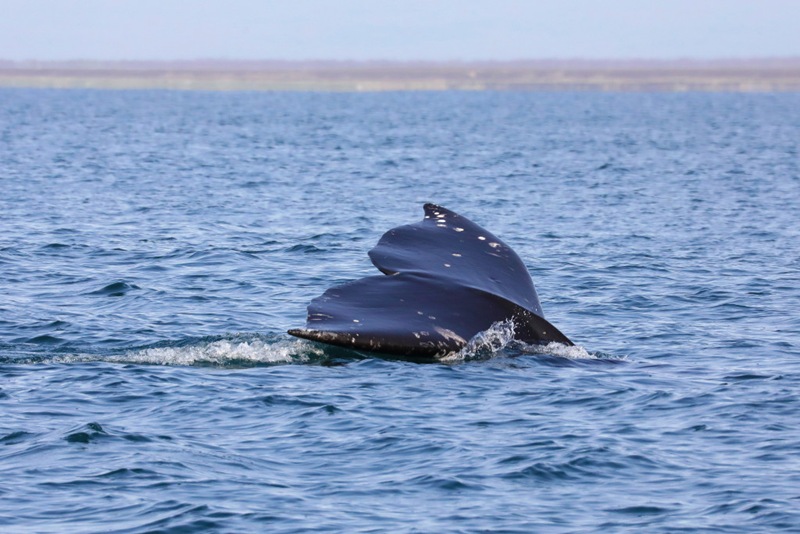Gray whales arrived in Kronotsky Bay off the coast of Kamchatka, a protected area of the Pacific Ocean. These sea giants come here every year for several months to recuperate after a long and exhausting journey.

During the long winter, which includes migration to the shores of Mexico for breeding and the return journey, as well as carrying and feeding young with milk, animals lose from 15 to 30% of their weight. There is practically no food for them in the warm southern seas, so they return to the feeding areas in the North Pacific Ocean much thinner and have to feed almost around the clock to replenish their fat reserves.
“During the month of observations, we have already registered 63 gray whales. Males, juveniles, and females without cubs are the first to return to feeding areas in order to start feeding as soon as possible. But the females with the whales stay in the breeding grounds, in warm waters, longer so that the baby has time to grow up before a long journey – it takes 8-10 thousand kilometers to reach the feeding grounds,” said Evgenia Volkova, marine biologist, researcher at the Kronotsky State Nature Reserve. Scientists determine the size and composition of the feeding group, assess the physical condition of individuals, study the distribution of whales in the water area and take samples to study their food supply. The observations will last until November.
Every spring, these sea travelers return to the shores of Kamchatka, because in the summer there is enough food for everyone in the northern latitudes. While giants such as blue whales, fin whales, seiwals and sperm whales rarely enter the protected coastal waters of the Kronotsky Nature Reserve, preferring to feed in deep-sea areas, conditions here are ideal for benthic gray whales.
For a long time, the hunting sea population of the gray whale was considered completely exterminated as a result of whaling. Today, its population is estimated at only 250-300 individuals. The feeding period is critically important for the well-being of this vulnerable population. Without sufficient fat reserves, whales will not be able to make their multi-thousand-kilometer migrations, carry and feed offspring. Therefore, the preservation of feeding grounds and ensuring rest for animals is of paramount importance. Tourism activities in the Kronotsky Nature Reserve are strictly regulated, and scientific research helps to monitor the condition of the rare Okhotsk population.
This year, the Kronotsky Nature Reserve received additional unmanned aerial vehicles for research of Red Book marine mammals. Financial support was provided by the Conservation of Ecological Systems of the Far East and Siberia Charitable Foundation within the framework of the Natural Systems of Siberia, the Far East and Other Regions of Russia program on Monitoring Wild Animal Populations.